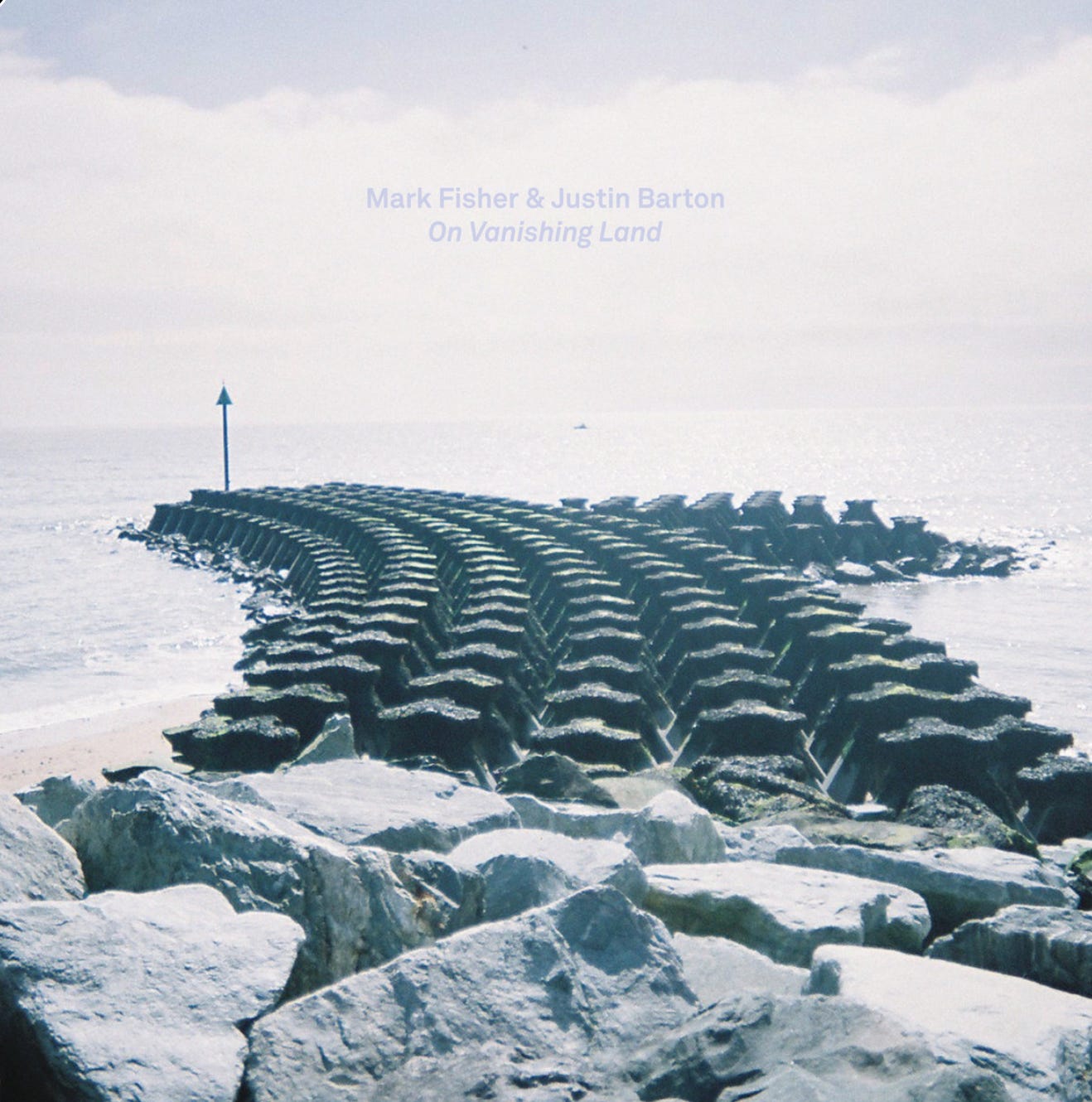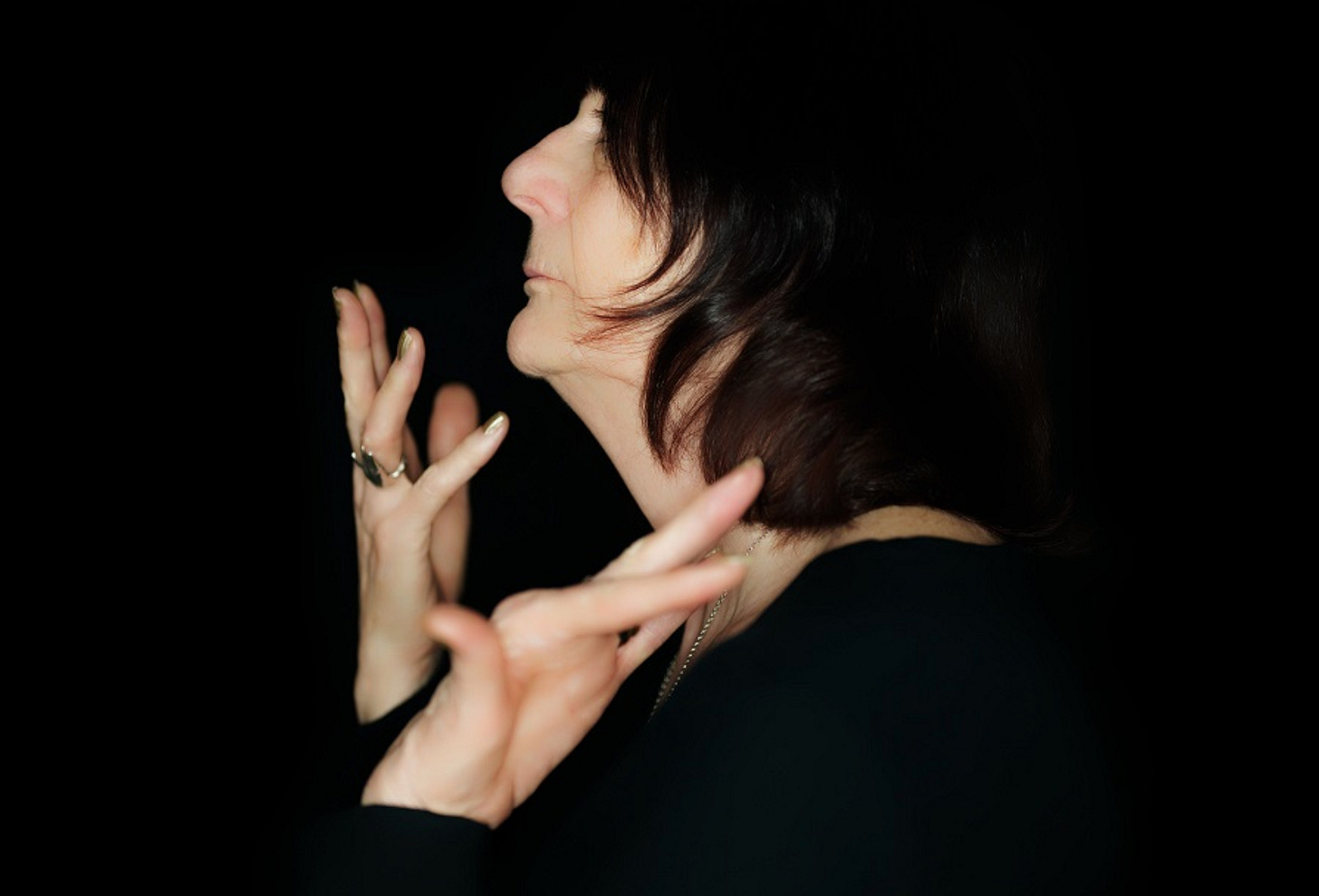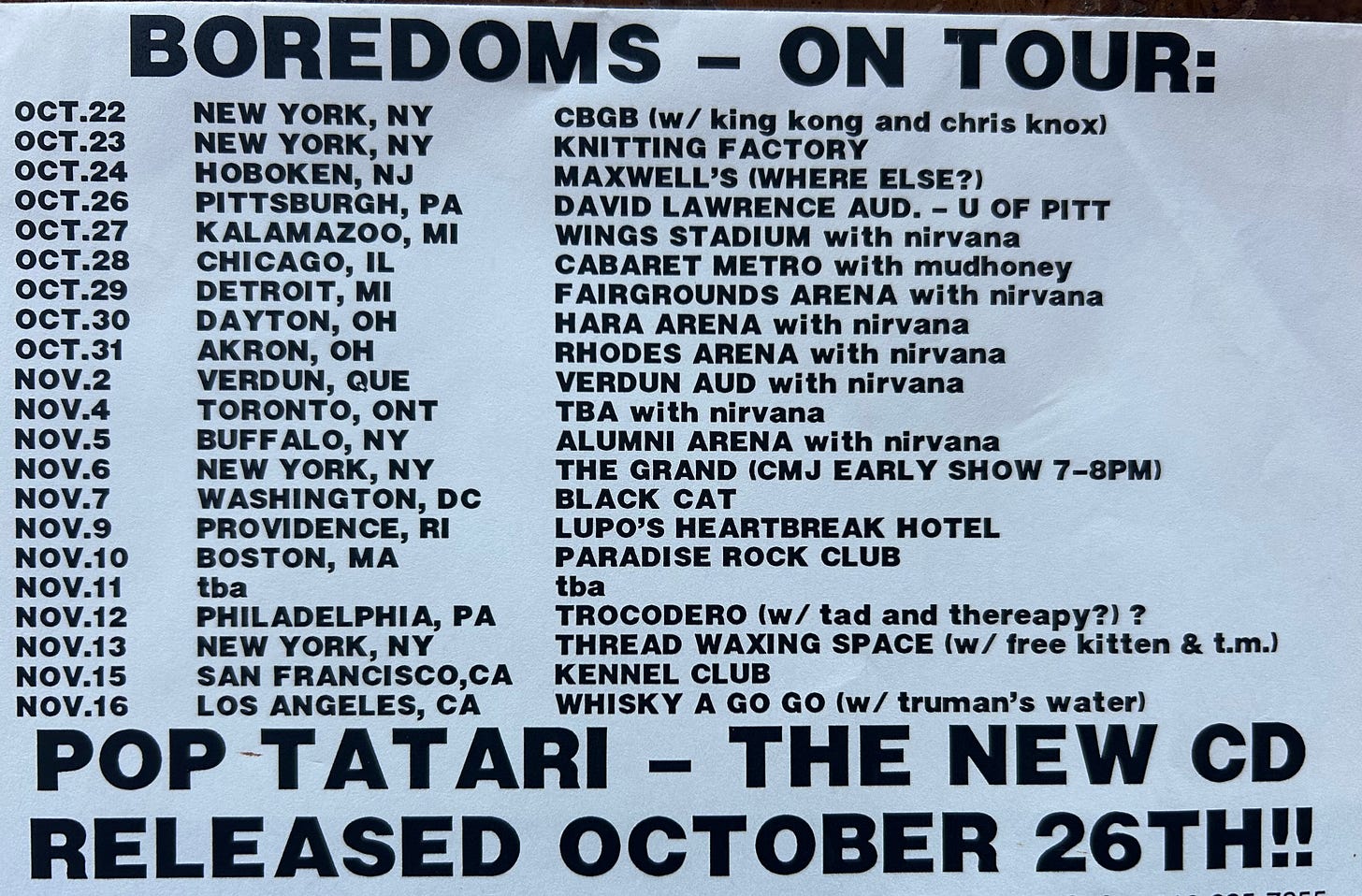The Beyond Audio Book (Tune Into...)
"A dream is not reality, but whose to say which is which"- Lewis Carroll
They are referred to as “sound art” or “mutant audio word essays” or “sound art experimental poetry” or “experimental abstract spoken word1” although their origins are from a very old, very commercial tradition, and in the age of audio book mass consumption they don’t seem really that alien. These are aural alchemies by artists playing with words and sound, using recording technologies to tell stories in innovative ways, inspirational for the adventurous listener. Done well, they are triumphs of modern storytelling, yet without a branded category to make them easily accessible.
Last weeks family camping trip up in the gold country, at a perfect site by a singing creek, surrounded by pines and cedars, I was always the first to awake in the morning. I started the day cleaning up the campsite, making coffee and fading in to the natural surroundings by listening to the latest ambient music discovered in the current Wire magazine and the weekly Forced Exposure mailer. On the last morning, while watching the sun warm the mountain nearby—waiting for it to find our camp—I came upon a record I had saved from last year, that I featured on my best-of list for 2024: Robin Mackay’s By The North Sea. By The North Sea is an audio triumph that explores the mysteries, both fact and fiction, of the English town of Dunwich that was once a thriving fishing community until, in the 14th century, it pretty much sunk into the sea. Mixing HP Lovecraftian lore (taken from his early short story Dagon, and not the The Dunwich Horror which is about a town in Massachusetts), olde English occultism, voices from philosophers and historians, enveloped with electronic tapestries and sounds from nature, Mackay ponders the fate of Dunwich’s inhabitants, many who disappeared. He employs characters such as Professor Rudolph Templeton and his unnamed sidekick (who acts as occasional narrator), looking for clues to what happened, exploring local customs and beliefs to unlock the mystery.
By The North Sea, and productions like it, are sound collages that find distant but real origins from the tradition of radio dramas from the early days of the medium when programs like The Shadow (with Orson Wells), Inner Sanctum and The Whistler were listened to by millions. These shows were state-of-the-art audio alchemy using experimental tape trickery, old fashion script writing, soundtrack composition, found and created effects—foundations of what would become known to future chemists as musique concrète—to create a very popular commodity produced brilliantly by criminally underappreciated visionaries like David Chrisman and Himan Brown, whose imaginative vision fueled these creations.
With the advent and access of television, the radio show format became archaic, but the medium of mixing storytelling and music and other sounds continued. I grew up listening to Disney records of their hit movies, sonically designed to take a child on an audio journey of the film experience—decades before streaming made the opportunity of the home viewing of current releases more immediate. Hand-me-down from my older brothers included Dumbo, Mary Poppins, and The Jungle Book records, each featuring a narrator (often a voice from a film’s main character), the film’s songs and other linked sounds to create a world to voyage through. One of my favorite records of this type featured Boris Karloff reading the story of Peter and the Wolf, with each character represented by a specific musical instrument. This beautiful piece was written in 1936 by Sergei Prokofiev as commissioned “programmatic music” loosely defined as music that tells a story…often with a narrator, giving us the closest thing to a genre title to name what was to come, what was to come when the abstracting artists began to safari within the medium.
The first bit of abstraction I came in contact with was a flexi disc my cardiologist father gave to me in the 70s, with a narrator leading the listener through a series of recorded heart sounds, exploring both healthy and diseased heartbeats. The nameless speaker was lulling…sterile…talking through incomprehensible complex medical theory that translated as difficult poetry, with the featured heartbeat sounds appearing like a chorus of the strange production.
Early innovators like France’s Pierre Schaeffer in the 1930s, in his case while working at a radio station, challenged the notion of voice and music presentation by engaging in radical tendencies like slowing down recording tape, cutting the tape indiscriminately, running pieces backwards, featuring abstract sounds, even building early electronic instruments to add additional layers to the collage. Composers like John Cage and Brion Gysin continued the work. Cage’s 1978 piece Roaratorio, based on James Joyce’s Finnegans Wake, is a beauty. Gysin’s methodology of cutting up voice-oriented recordings inspired others like writer William Burroughs, who beautifully explained, “when you cut into the present the future leaks out.” True thanks to Genesis P Orridge, who rescued Burroughs’ experiments from his dusty closets and releasing them, (1981’s Nothing Here Now But The Recordings), which in turn inspired new generations of musicians to dip in to what the legendary writer was re-mixing up.
The world of programmatic music excitingly explores the outer reaches of storytelling, exemplified so well by the work of the Canadian artist collective Intersystems and their enigmatic 1968 release Free Psychedelic Poster Inside. With Intersystems members Blake Parker as beatish poet and electronic music pioneer John Mills-Cockell, Free Psychedelic Poster Inside, a record that comes with no poster, tells the post-atomic suburban story of a couple, Gordy and Renee, as they move through the every changing modern world. There art piece is build around bits of hallucinatory narrative swimming in oceans of electronic noise and oscillations: the end result is an operetta of Martian tendencies, a crazed world to explore, that succeeds in exploring the idea that we often find ourselves as aliens in our own swiftly evolving landscape.
Another inspired example of this craft, another favorite, comes much later when in 1991-92, sound sculptist Randy Grief released a five volume six hour construction of Alice in Wonderland, taking a more traditional recorded English narration of the already fantastical, dreamscape of a story, using modern sampling, electronic music and sound construction to mutate the spoken words into vibrating, sometimes distorted and pulsating creatures, not only reimagining the world Alice falls into, but offering a glimpse into the mind of Lewis Carroll, the mysterious madman who conceived of the story in the first place. It is almost impossible for the listener not to join Alice in the rabbit hole, the tea party, growing and shrinking, all with questions abound challenging the nature of consciousness and character. Grief’s masterwork should place him in the same conversations as sound and vision designer Christian Marclay or Bruce Conner but again, the canvas he uses has traditionally had a more obscure field and thus is not recognized for the genius it is.
There are so many engaging examples of voice-driven-story-centric “programmatic music.” We have not even dipped into the great work of Charles Dodge, Gavin Bryars, Laurie Anderson, Nurse With Wound, The BBC Radiophonic Workshop and so many others (please leave comments below if there are some favorites to turn us all on to). Getting back to Robin Mackay, By The North Sea was released by Flatlines, a label dedicated to “audio essays and sonic fiction.” Mackay’s work was in response to another likeminded project called On Vanishing Land, also released by Flatlines, created by Mark Fisher and Justin Barton. It was Mark Fisher’s premature death that sparked Mackay to create his work as an honoring to a fellow experimental audio essay travelist.
Friends who “read” many an audio book tell me that the success of the experience is all about who the reader is and their oratory style. I cannot help thinking of the multi-dimensional opportunities around framing the words with choreographed soundscapes. I think of stream of consciousness books like James Joyce’s Ulysses or Thomas Bernhard’s The Loser…novels constructed with verse like The Autobiography of Red by Anne Carson, Don Juan by Lord Byron or Idylls of the King by Alfred Tennyson…or novelists who write often with the language of dreams like Cesar Aira (I am reading Ghosts at the moment) or Jorge Luis Borges: imagine audio interpretations that would circumambulate the works, open them up almost spiritually with the use of imaginative sound design and sculpting2; books that fall within indescribable categories containing desirable abstraction that could be brought to new heights if instead of a simple reading via an audio book, there could be a righteously artistic sound collage medium baked all around. The experience might not be as easy of one as via the straighter read on audible, but it has the possibility of offering a whole new head for the words floating off the page.
Sly Stone Obit by Alec Palao
My friend Alec Palao got to know Sly over a long period of time, and I must say his eulogy is the best I have read. What an incredibly talented individual, always one step ahead in all his pursuits: as a dj, producer and artist. Everyday People! Thank You (Falettinme Be Mice Elf Again)! Underdog! Dance To The Music! He was the funkiest…and had a smile so wide that it helped shape his generation. RIP.
Japanese Audio Alchemy—The Mactone XX7000 Line Stage Preamplifier
This stereo review is more of poetic memoir. My friend David Hyman has shared his love of high end audio, creating a self-portrait through his journey into the land of audio equipment as well as a biography of Japanese audio. When he gets deep into the explanation of the equipment, when the terminology goes over my head, his writing still reads like free jazz poetry. A beautiful piece that is the start of more writing from Hyman around stereo equipment. Also, this: The truth is, I've never been the world's most responsible vinyl owner. I'm the guy with 20 LPs splayed out like playing cards across the floor."
All Hail the Fail Failure Museum founder Sean Jacobsohn ’94 finds insights in business flops.
Who wants some Cheetos Lip Balm….“Not a lot of people like to talk about failure and lessons from failure, but really, most companies fail at some point. Even the most successful companies have had to pivot, and many of the most successful entrepreneurs have had a failed start-up before. I’ve found that you really need to learn from failure and learn quickly.”
Excited to be on the White Meat podcast with David Dillan Thomas talking about the horror films of 1975. Yes, I am trying to watch all of them, and need your help: I am having a hard time tracking down some horror films from 50 years ago. Anyone has any ideas on how to how to track these down: The Devil’s Horse, At Lumaganap Ang Lagim, The Romance in the Ghost House, Pontianak, Haunted House #3, Jeonghyeon Mi-in, Qiu Yu Xiao Xiao or Wapper (whose existence I question).
Two Men Sentenced for Stealing Maurizio Cattelan’s Golden Toilet in England
It is almost a bad ferry tale. There was the goose that laid the golden eggs, Jack stole her…and then on a bender he and the baker went for the toilet…
“You find meaning in things – that’s the whole struggle,” Dourif says. “And you just live with them for a while. For most of my life, I could pop right out [of character]. But eventually what happened is my ‘shock absorbers’ were gone and stuff would linger. It wasn’t that I was crazy – it was just that the emotional things couldn’t get out of me and some of the horribleness couldn’t … I mean, I played a lot of killers and things, really dark shit, and it was much more difficult for me to get out of – Chucky being the exception.”
Cosey Fanni Tutti interview – “I don’t know any other way of existing”
“Cosey’s process in the studio is to work as quickly as possible to capture energy and preserve the immediacy of an initial idea. Strands from her previous work surrounding Delia Derbyshire have found their way into 2t2, with Delia’s late artist friend Andy Christian a sounding board of inspiration. He was a character who Cosey discovered when researching ‘RE-SISTERS’, a fellow creative who had been with Delia during the time she spent in Cumbria. ‘Delia used to go and see him in the evenings, they would sit, listen to music, have a drink and talk,’ she continues. ‘He showed her these particular drawings, she read them as a film score where she intoned and sang softly to them. Andy gave me permission to take them forward on my album.’”
There are Always Blackberries, There is Always Sugar
By: Mathieu Cailler
For Mary Oliver
every day,
I wake up,
see the newspaper’s
front page
and think
about penning
humanity's obituary,
but then
I notice
the blackberries
that begin to sprout
along my fence line
and wish to stick around
for them
to toss the fruits
of their labor
in lemon juice
and dust them
with sugar!!!!!!!!!!!!!!!!Happy 100th Birthday Bebe Barron!!!!!!!!!!!!!!++++
“The strangeness of Time. Not in its passing, which can seem infinite, like a tunnel whose end you can't see, whose beginning you've forgotten, but in the sudden realization that something finite, has passed, and is irretrievable.”
― Joyce Carol Oates
Terms taken from different discogs entry
Maybe Randy Grief should try and tackle the seven volumes of Proust’s Remembrance of Things Past.


















I enjoy and look forward to your writing